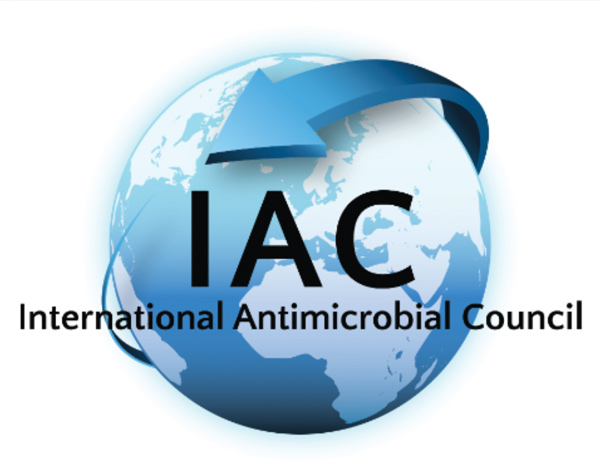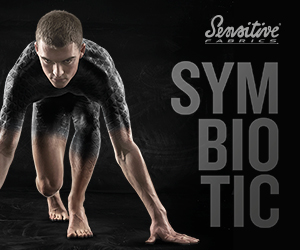Clearing the Confusion
What You Need to Know Right Now Regarding AntiMicrobial Textile Tech.


As coronavirus continues to run its course, textile treatments to combat the disease are entering the marketplace at a rapid rate with a surge of interest around antimicrobial and anti-viral solutions. This is creating a lot of confusion around what is, and what isn’t, an effective textile technology. We went to the source to set the record straight. David J. Proctor, Ph.D. is the technology director of the International Antimicrobial Council (IAC). Who better to offer a clear understanding of the latest developments and provide what we need to know now in the time of COVID-19, as well as learn the influence of the pandemic on innovations going forward? Here are Dr. Protcor’s expert responses:
How do you define “antimicrobial” and how is that different from “anti-viral” and “antibacterial?”
Antimicrobial is a general term that refers to agents or approaches acting on microscopic organisms such as bacteria, fungi, and protists, as well as viruses. This is in contrast to antiviral and antibacterial, which refer to agents or approaches that specifically act upon viruses and bacteria, respectively.
What test methods are recommended and are there specific levels of performance these agents need to achieve?
The answer depends on the substrate, antimicrobial technology and organisms in question.
According to ASTM Committee E35 on Pesticides, Antimicrobials, and Alternative Control Agents, for the quantitative measurement of the efficacy of antiviral agents, a modification of ISO 18184:2019 that incorporates a human coronavirus surrogate and associated cell line is ideal for testing that can be carried out in a Biosafety Level 2 laboratory.
This new ASTM methodology (currently a draft within ASTM E35.15 wk73068) will be more adapted for measuring antiviral performance of antimicrobial agents on textiles without introducing potential bias due to pre-sterilization of textile samples.
For the quantitative measurement of the efficacy of antibacterial agents, AATCC 100-2019 is the most current method available. This method has the advantage of being well established, and measures antibacterial activity against both Gram-positive and Gram-negative organisms. ASTM E3160 and ASTM E2149 have also been used and are excellent options for routine quality control methods. Outside of the United States, similar methods may be more readily recognized such as ISO 20743 or JIS L1902.
These antiviral and antibacterial methods were specifically designed for porous substrates such as textiles. Related test methods are available for non-porous substrates that mirror the methods mentioned here.
For both antiviral and antibacterial agents, a 3-log or 99.9 percent reduction in the quantity of viral infection or bacterial count can often be achieved, especially in the absence of durability testing. FDA and EPA registration of antiviral and antibacterial agents requires even greater efficacy.
Which certifications are required in order to make accurate claims? FDA? EPA? Other independent 3rd party labs?
Currently, no claims can be made about the antiviral activity of a treated article in the United States or European Union. Although this hasn’t stopped many companies from making claims, regulators have already begun to respond to violations.
In the United States, antibacterial agents that are registered with the EPA may be exempt from regulation under the Federal Insecticide, Fungicide, and Rodenticide Act (FIFRA). Details are available in the EPA Pesticide Registration (PR) Notice 2000 – 1, which is easy to search for online and is readily available on the EPA website.
How is the IAC assessing the COVID-19 situation with regards to what’s happening with textile ingredient technology being developed specifically to fight the virus? And how is today’s reaction to the pandemic influencing future developments of antimicrobials?
The IAC continues to work with industry partners to evaluate promising R&D findings that may demonstrate efficacy against SARS-CoV-2. Additionally, we continue to educate our community about what is known, and how to assess new claims and new products. A lot of great work is being done in the antimicrobial industry and adjacent industries to advance what we know and what we can do to fight the virus.
Forward-looking R&D organizations are considering what technologies we have, or need to develop, in order to fight not only SARS-CoV-2, but future viruses and microorganisms. What do these viruses and organisms have in common that we can exploit to protect ourselves? What technologies do we have in hand that we can improve for this future fight? What new technologies do we need to develop that will allow us to tackle unforeseen aspects of transmission and infection from future viruses and microorganisms, e.g. a safe, effective, flexible platform that we can add different technologies to? There is much work to be done.
The IAC continues to work with IAC Certified laboratories that can provide IAC Verified test reports. These IAC Verified test reports are critical to ensure that the antibacterial and antiviral testing has been performed by laboratories are capable and competent to run these specific test methods. The IAC continues to work with International Testing Standards groups to develop the latest useful and predictive test methods that can be used in the market to measure antimicrobial properties on surfaces. The IAC continues its Mission to promote the prudent and responsible use of antimicrobial agents in the Marketplace.



